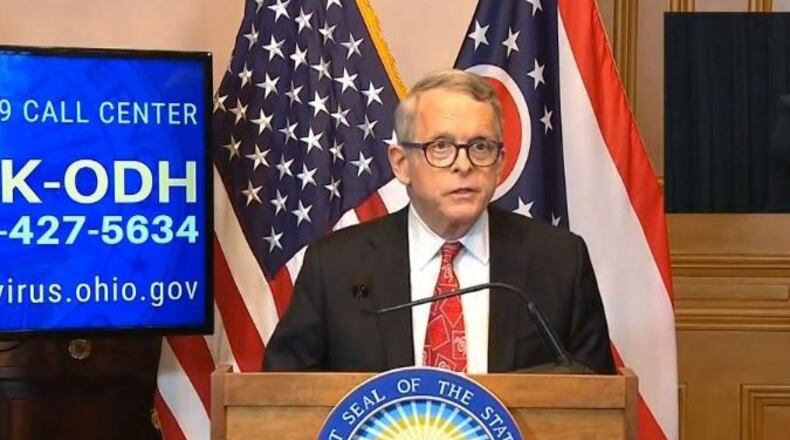The pandemic eroded state tax collections by $867 million below estimates in April, Office of Budget and Management Director Kimberly Murnieks said.
Murnieks released details Wednesday showing how the cuts would trickle down locally.
Springfield City Schools will lose over $942,121 in state aid, the highest local dollar amount, but will not have to make any immediate changes, according to the district superintendent.
“Due to responsible fiscal management and insight to prepare for emergencies, the Springfield City School District will not have to make any immediate cuts to our programming, services, or staffing,” Superintendent Bob Hill said.
RELATED: Coronavirus: DeWine announces $775M reduction in Ohio’s budget
The state cuts were structured to protect lower-property wealth school districts somewhat by cutting their funding less on a per-pupil basis, Murnieks said.
The state’s highest-wealth districts will lose on average $254 per pupil, while the lowest-wealth districts will lose an average of $118 per pupil, Murnieks said. This formula was used because state school funding in general is intended to help districts that have less capacity to raise money via local levies.
Most school districts’ funding losses will equal between about 1% and 2% of a year’s total expenses, according to OBM data.“This is in line with how the school foundation program is set up in the first place,” Murnieks said. “Taking into account the ability of school districts to fund their programs based on property wealth.”
Tecumseh Local School District will lose $397,546 and is still determining what measures they will need to take to offset the loss.
“It certainly will have fiscal impacts and fiscal impacts lead to negative impacts for our students,” said Tecumseh Superintendent Paula Crew. “It is too early in the process to determine the specific measures we may need to put in place for next and following years. It is evident that we will need the financial support of our community in the next couple of years in order to maintain services.”
Other schools said the cuts are concerning, but they regularly look at costs and make reductions when needed.
RELATED: Local schools to lose millions in state money in next 2 months: What it means for your district.
“Fortunately we have been consistently frugal by making reductions when possible and have taken opportunities to save money, so we have some cushion in our budget,” Urbana Superintendent Charles Thiel said. His district will lose $367,803.
Mechanicsburg Superintendent Danielle Prohaska said the district, which is losing $144,248, is “concerned about this loss and even more so for what next year will hold.”
Murnieks said one piece of the equation has not been resolved yet.
When a student attends a charter school or a private school on a voucher, the student’s local school district is required to deduct their funding amount and pass it on to the charter or private school. Murnieks said the state has not yet decided whether school districts still will have to pass along the full amount, given their cut in state funding.
Murnieks also said DeWine’s $55 million planned cut in “other education budget line items” is not finalized, with more information due in the coming weeks.
She did give two examples — that the state would save $5 million from not administering state tests and producing a report card this year, and that $5.7 million allocated to the EdChoice voucher expansion program would be saved because not all available private-school vouchers were used this year.
Largest local cuts (by dollar amount)
Northeastern - $646,989
Tecumseh - $397,546
Clark-Shawnee - $395,538
Urbana - $367,803
Greenon - $354,020
Graham - $345,211
Northwestern - $292,167
West-Liberty Salem - $200,183
Triad - $170,448
Southeastern - $144,851
Mechanicsburg - $144,248

